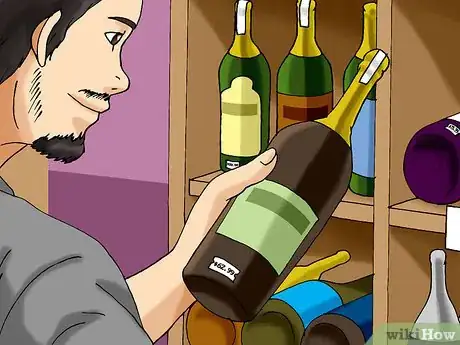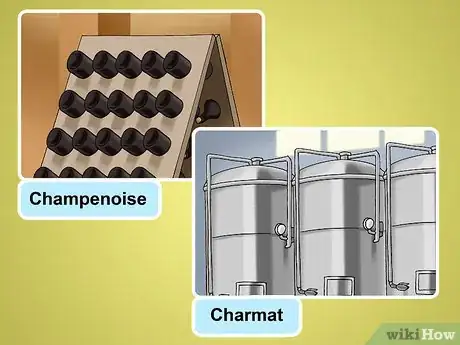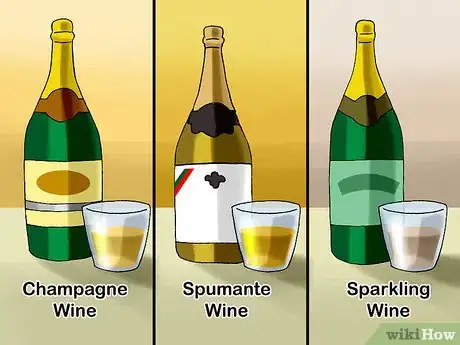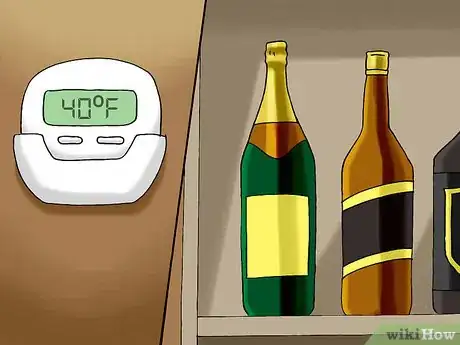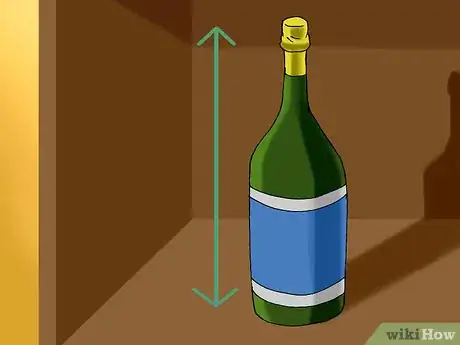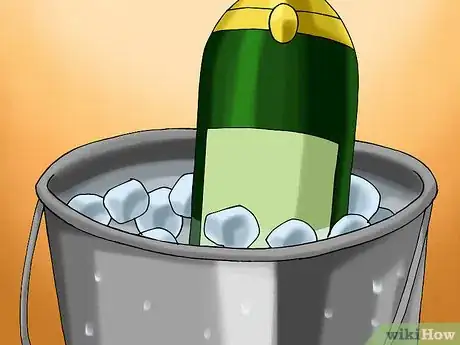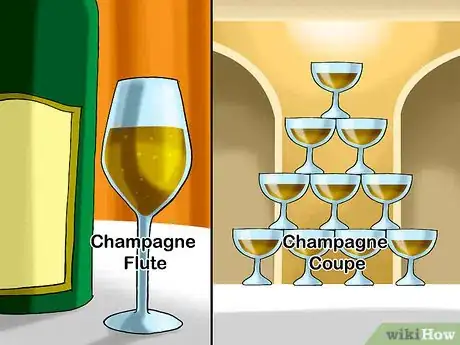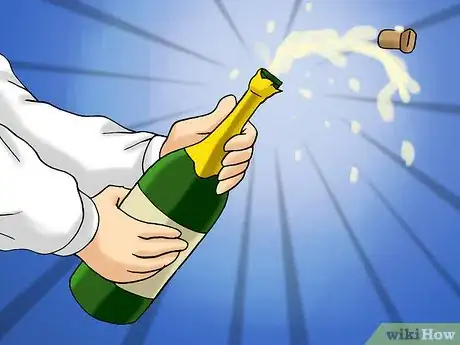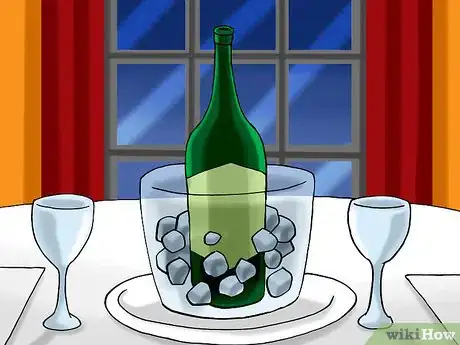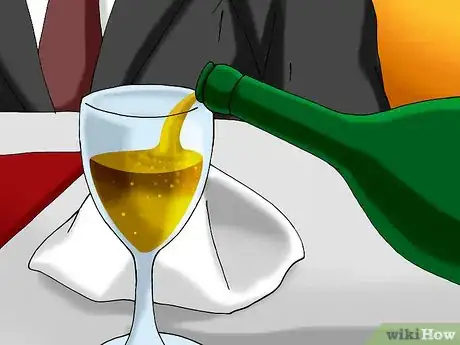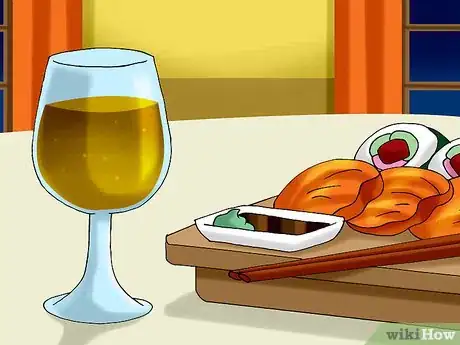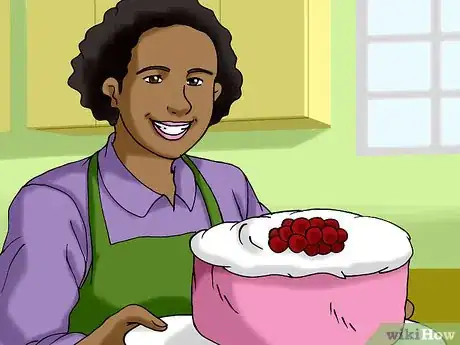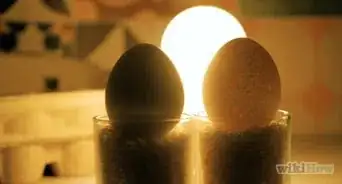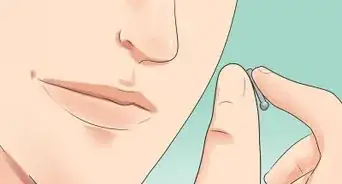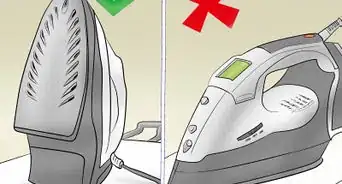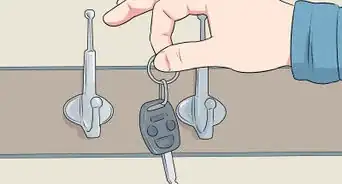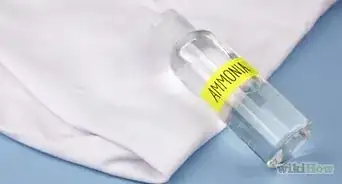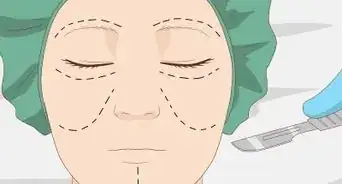This article was co-authored by Tom Blake. Tom Blake manages the bartending blog, craftybartending.com. He has been a bartender since 2012 and has written a book named The Bartender's Field Manual.
There are 12 references cited in this article, which can be found at the bottom of the page.
This article has been viewed 130,794 times.
Champagne is an indulgence often associated with celebratory moments or opulent occasions. Serving champagne is an art form, from choosing the champagne to pouring it and pairing it with food. Whether known as champagne or sparkling wine, the bubbles in this style of wine cleanse the mouth, while its high acidity provides a refreshing taste. To get the most from your champagne or sparkling wine experience, learn the art behind serving it well.
Steps
Selecting the Champagne
-
1Choose between champagne and sparkling wine. For a long time, all sparkling wine was referred to as "champagne" until many countries chose to apply the "rules of appellation." This restored the technical designation of champagne so that it referred only to those sparkling wines grown and made in the Champagne region of northeastern France.
- Champagne from the Champagne region continues to be the "gold standard" of sparkling wine because the climate is cool and combines with the chalky soil to produce very acidic grapes, ideal for making sparkling wine. Moreover, champagne from this region tends to be aged for years rather than the months of aging allowed for most other varieties.[1]
- In other regions where sparkling wine is produced, it tends to be referred to as: Cava in Spain; Sekt in Germany; Spumante or Prosecco in Italy; and sparkling wine in Australia, the US, New Zealand, and South Africa.
-
2Use price as a guide for your selection. Bottle-fermented champagne and sparkling wine have a more labor-intensive production and the price should reflect this, while carbonated styles should be a lot cheaper. Mostly you get what you pay for with champagne and sparkling wine – so the more you pay, the better the experience.
-
3Select the kind of champagne you want based on production. Different methods can be used to create champagne, including the method champenoise, charmat, or cube close, which require varied lengths of time of fermentation in the bottle.[2]
- A less time- and labor-intensive process is that of carbonating a still wine (known in some places as "carbonated pop wines"), which can still produce a pleasant sparkling wine.
-
4Choose based on taste. Most, but not all, sparkling wine is white and dry (brut) following the French Champagne style, while others are sweet in the Italian Asti Spumante style. You can also try prosecco, which is sparkling wine made in the Veneto region of Italy. If you fancy a little color for your dinner party, there are also some rosé sparkling wines (pinkish to red shades), as well as some red sparkling wines from such places as Australia and Argentina.[3] While there is a wide variety available to choose from, some good choices include:
- Champagne: Dom Pérignon, Taittinger Comtes de Champagne, and Krug Grande Cuvée.
- Spumante: Asti, Franciacorta, and Trento.
- Prosecco: Nino Franco, Luna d'Or NV, La Marca, and Zonin.
- Sparkling wine: Schramsberg, Roederer Estate, Domaine Carneros, Tasmanian sparkling wines, and Marlborough region sparkling wines.
Storing the Champagne
-
1Store the champagne in a cool place. Before you're ready to serve it, keep your champagne (and all wine) in cool-but-not-cold conditions with little direct light and very little variation in temperature. Basements that stay between 40ºF and 60ºF (4ºC-15ºC) are perfect.[4]
-
2Store the champagne horizontally. Horizontal storage helps prevent the wine from spoiling and allows the cork to remain moist, which will help keep the air out and keep the gas in. This is an important factor in maintaining the flavor and bubbles in your champagne.[5]
-
3Chill the champagne before serving. Colder champagne tastes better, but it is also less likely to bubble over when you open it. The ideal drinking temperature is between 45ºF and 48ºF (7ºC-9ºC). If you've got the time, 4 hours or more in a refrigerator will be enough to put your champagne into the proper range.[6]
- The classic way to chill champagne is in an ice bucket. Champagne buckets are frequently larger than other wine chilling buckets to allow for more water and ice. You should fill the bucket with half water and half ice and let it chill for 15-20 minutes before serving.[7]
Serving the Champagne
-
1Decide what you will serve the champagne in. The traditional champagne flute – a tall, narrow glass – will preserve carbonation best. A wine glass with a slight belly-bulge at the bottom will allow more of the nose of the wine to accumulate without providing too much loss of carbonation.[8]
- A champagne coupe is a wide mouth glass seen most often in the champagne glass pyramids at weddings. These are not ideal for the dry champagnes that are popular today, as they give up lots of the carbonation and do not maintain the vapors as well for the pungent aroma part of the experience.
- For an extra special presentation, create a champagne pyramid using champagne coupe glasses. It's best to opt for a less expensive type of champagne for this type of presentation.
-
2Pop the cork. To pop the cork of a champagne bottle quietly and safely, first you need to loosen the muselet (the wire cage that fits over the outside of the cork), but don't remove it completely. Then hold the champagne bottle at a 45̊ angle and begin rotating the base of the champagne bottle. Keep doing this until the cork loosens and pops off.[9]
-
3Present the champagne. If you are serving champagne in a restaurant setting, it is common practice to present the bottle to the host of the party you are serving with the label facing them so they can read inspect and read the bottle. You may also serve a small sample to the host for their approval before dispensing the champagne to the other guests.
- Serve your customers in a clockwise fashion.
-
4Know how to pour champagne. The pouring aspect is very important because if the champagne is poured incorrectly, it can lose its distinctive bubbly taste. To correctly pour champagne, you should hold the bottle with one hand firmly at the base with your thumb in the punt (the depression) and spread your fingers out along the body of the bottle.[10]
- Pour the champagne against the side of the glass rather than directly into the bottom. This will help the champagne maintain more of its bubbles.[11]
- Additionally, remember that many bottles of champagne are stored in dank cellars that are less than spotless as far as clean storage conditions go. For this reason, you should never let the bottle touch the glass in any way as you pour.
-
5Pair the champagne successfully. In general, you'll find that champagne varieties pair well with cheeses, shellfish, lobster, shrimp, crab (in light sauces), oysters, sashimi, salmon roe, fish cakes, tempura, poultry, Asian foods, dishes containing basil and coriander, soy, wasabi, and desserts, including, of course, wedding cake.[12]
- Dry champagne styles can be used as a palate cleansing aperitif, such as after eating salty snacks or sushi. Or, finish a meal with champagne to cleanse the palate, rather than having dessert.
- Champagne and sparkling wines are a good combination with rich and creamy food because of the strong acidity of the wine, especially dry champagne styles.
- Mid-sweet and very sweet sparkling wine styles (carbonated pop wines and very sweet spumantes) are best for drinking for fun, adding to punch, and enjoying with sweet desserts like ice cream or gelato. They also pair well with spicy foods as the can help balance out the dish.
- Rosé styles contain tannin and are good for matching with rich fish dishes, such as ocean trout or salmon. Serious red champagne styles (bottle-fermented, not the carbonated pop wine style) are great matched with red meat, game, and turkey dishes.
-
6Serve champagne as a part of another drink or food. Champagne can also be made into champagne cocktails, paired with a range of liqueurs and spirits that result in a mixed drink or even used in cooking or baking. It's just another twist on a way to serve your champagne, although it's probably best to reserve this serving use for less esteemed champagnes!
- For example, to make a very simple champagne cocktail, place 1 sugar cube in a champagne glass, add 5 drops of Angostura bitters, then fill the glass two thirds full with chilled champagne. Garnish with a slice of orange or a strawberry half. If you use slightly less than two-thirds a glass of champagne, then you should get approximately 5 cocktails from 1 standard champagne bottle.[13]
- Make champagne sorbet for dessert.[14]
- And if you have flat champagne, don't let it go to waste! Try making champagne cake, a brilliant solution to using leftover champagne in a tasty way.[15]
Expert Q&A
-
QuestionDoes champagne or any wine taste or survive better served in silver-plated goblets?
 Tom BlakeTom Blake manages the bartending blog, craftybartending.com. He has been a bartender since 2012 and has written a book named The Bartender's Field Manual.
Tom BlakeTom Blake manages the bartending blog, craftybartending.com. He has been a bartender since 2012 and has written a book named The Bartender's Field Manual.
Professional Bartender No, it doesn't fare better in silver-plated goblets. Glass is best because it won’t take on any other flavours.
No, it doesn't fare better in silver-plated goblets. Glass is best because it won’t take on any other flavours. -
QuestionIs it proper to serve champagne with appetizers before a dinner and then use a dinner wine?
 Tom BlakeTom Blake manages the bartending blog, craftybartending.com. He has been a bartender since 2012 and has written a book named The Bartender's Field Manual.
Tom BlakeTom Blake manages the bartending blog, craftybartending.com. He has been a bartender since 2012 and has written a book named The Bartender's Field Manual.
Professional Bartender Yes, of course! That’s a very common and popular way of serving champagne.
Yes, of course! That’s a very common and popular way of serving champagne. -
QuestionHow do I hold champagne?
 Tom BlakeTom Blake manages the bartending blog, craftybartending.com. He has been a bartender since 2012 and has written a book named The Bartender's Field Manual.
Tom BlakeTom Blake manages the bartending blog, craftybartending.com. He has been a bartender since 2012 and has written a book named The Bartender's Field Manual.
Professional Bartender Either at the bottom or on the side - it doesn’t matter. If you’re serving guests, the idea is to always have the label facing them when pouring the glass.
Either at the bottom or on the side - it doesn’t matter. If you’re serving guests, the idea is to always have the label facing them when pouring the glass.
Warnings
- Do not serve alcohol to people under 21 in the USA.⧼thumbs_response⧽
- Always drink responsibly! Don't drink if you have to drive and make plans to get home safe!⧼thumbs_response⧽
Things You'll Need
- Champagne or sparkling wine
- Appropriate glassware
- Cool storage
References
- ↑ Jennifer Tung, InStyle Parties, p. 23, (2005), ISBN 1-932994-11-4
- ↑ Larousse Gastronomique, Sparkling wines, p. 1005, (2009), ISBN 978-0-600-62042-6
- ↑ http://www.wineintro.com/champagne/basics.html
- ↑ http://www.champagne.fr/en/tasting-and-appreciation/art-of-serving-champagne/cooling-champagne
- ↑ https://www.intowine.com/champagne2.html?page=0,1
- ↑ http://www.champagne.fr/en/tasting-and-appreciation/art-of-serving-champagne/cooling-champagne
- ↑ https://www.henrisreserve.com/?method=pages.showPage&PageID=86E55901-0BC3-2C8E-26D2-A69ABDE45471&originalMarketingURL=education/how-to-handle
- ↑ https://www.intowine.com/champagne2.html
- ↑ https://winefolly.com/tips/how-to-open-champagne-safely/
- ↑ https://www.intowine.com/champagne2.html
- ↑ https://www.henrisreserve.com/?method=pages.showPage&PageID=86E55901-0BC3-2C8E-26D2-A69ABDE45471&originalMarketingURL=education/how-to-handle
- ↑ http://www.wineintro.com/food/charts/champagne.html
- ↑ http://www.foodnetwork.com/holidays-and-parties/articles/champagne-cocktails.html
- ↑ http://www.simplyrecipes.com/recipes/champagne_sorbet/
- ↑ http://allrecipes.com/recipe/8166/champagne-cake-i/
About this article
To serve champagne, first chill it in an ice bucket for 15-20 minutes, or in a refrigerator for 4 hours. You can gently pop the cork by loosening the wire cage, holding the cork firmly, and slowly rotating the bottle. To pour, hold the bottle at the base with your fingers around the body and pour down the side of the champagne flute. Drop a strawberry inside to add a subtle fruity flavor. To store your champagne when you’re not drinking it, place it in a cool place, like a basement, to keep it between 40 and 60 °F. For more tips, including how to choose the best champagne for your occasion, read on!

